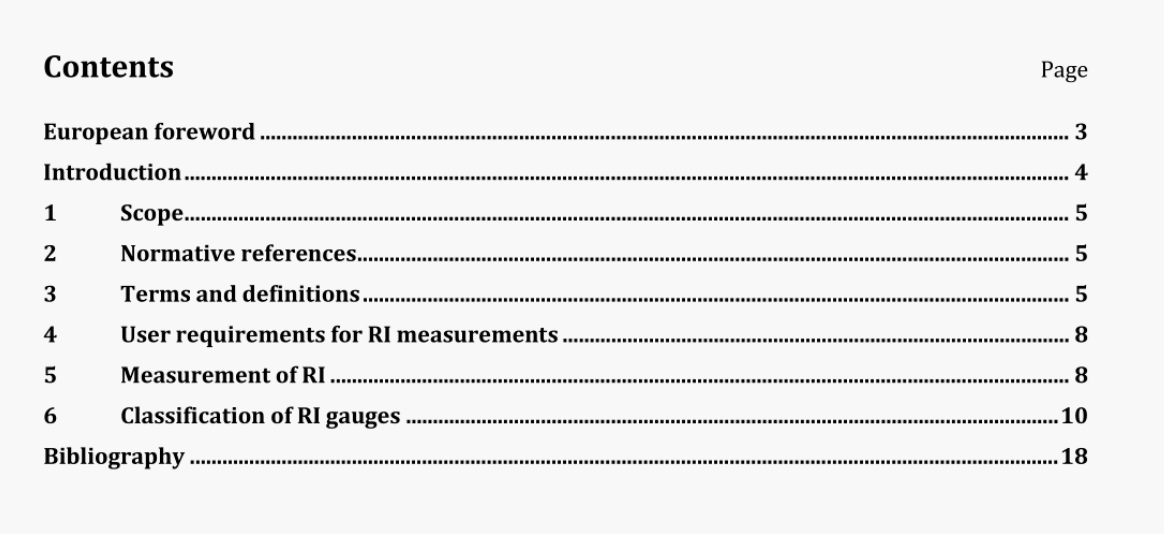BS EN 17277:2019 pdf download.Hydrometry一Measurement requirements and classification of rainfall intensity measuring instruments
1 Scope
This document considers liquid atmospheric precipitation and defines the procedures and equipment to perform laboratory and field tests, in steady-state conditions, for the calibration, check and metrological confirmation of liquid precipitation measurement instruments. It provides a classification of catching-type measurement instruments based on their laboratory performance. The classification does not relate to the physical principle used for the measurement, nor does it refer to the technical characteristics of the instrument assembly, but is solely based on the instrument calibration. Attribution of a given class to an instrument is not intended as a high/low ranking of its quality but rather as a quantitative standardized method to declare the achievable measurement accuracy in order to provide guidance on the suitability for a particular purpose, while meeting the user’s requirements.
2 Normative references
The following documents are referred to in the text in such a way that some or all of their content constitutes requirements of this document. For dated references, only the edition cited applies. For undated references, the latest edition of the referenced document (including any amendments) applies.
EN ISO 10012:2003, Measurement management systems – Requirements for measurement processes and measuring equipment ISO 10012:2003)
5,Measurement of RI
5.1 General
Rainfall intensity (RI) is defined as the amount of liquid precipitation (rainfall) collected per unit time interval. Due to its variability from minute to minute, there is an agreement of measuring RI over 1 min time intervals and then RI in mm/hour is derived from the measurements taken in 1 min. RI is measured directly using rainfall intensity gauges, for instance, using a gauge and measuring the flow of the captured water, or the increase in collected water as a function of time. A number of measurement techniques for the determination of the amount of precipitation are based on these direct intensity measurements by integrating the measured intensity over a certain time interval. Traditionally, the volume of liquid precipitation received by a collector through an orifice of known surface area in a given period of time is assumed as the reference quantity, namely the rainfall amount. Under the restrictive hypothesis that rainfall is constant over the accumulation period, a derived quantity – the rainfall rate or intensity – can be easily calculated. The shorter the time interval used for the calculation, the nearer to the real rate of precipitation reaching the ground. This approximate measure of the rainfall intensity has been accepted for a long time as sufficiently accurate to meet the requirements of both scientific and technical applications. Reasons for this are on the one hand that most traditional applications in hydrology operate at the basin scale, thus dealing with a process of rainfall aggregation on large space and time scales, while on the other hand the available technology of measurement instruments, especially in terms of data storage and transmission capabilities, was lower than is currently available.
BS EN 17277:2019 pdf download
